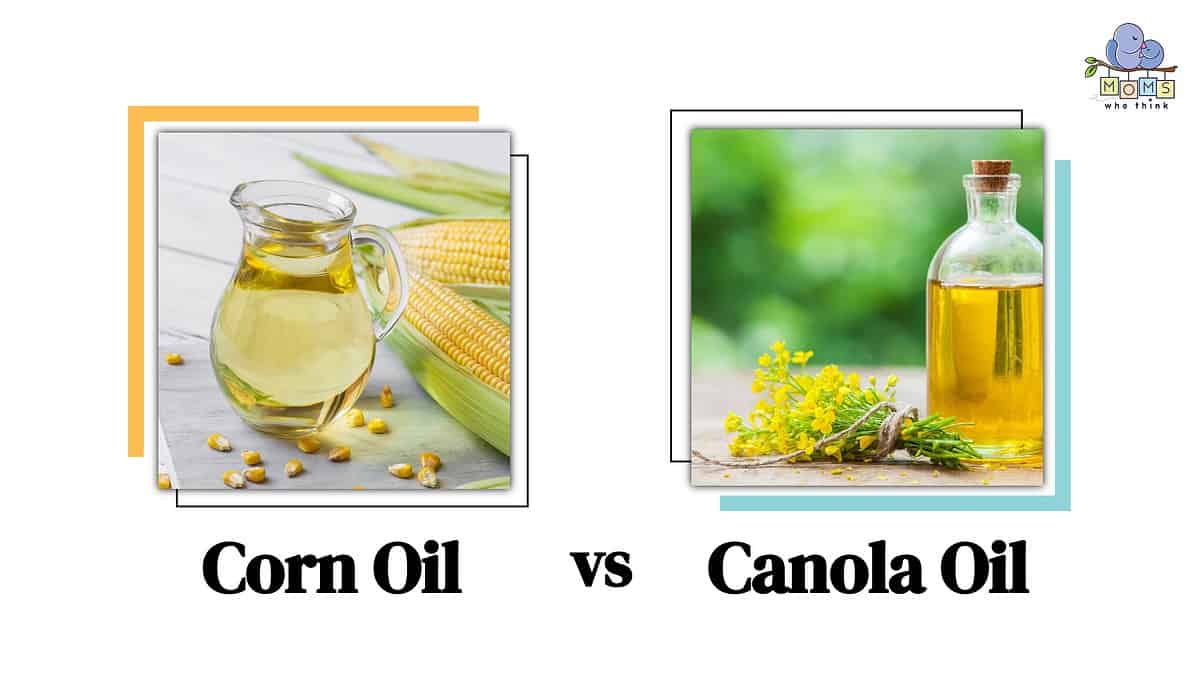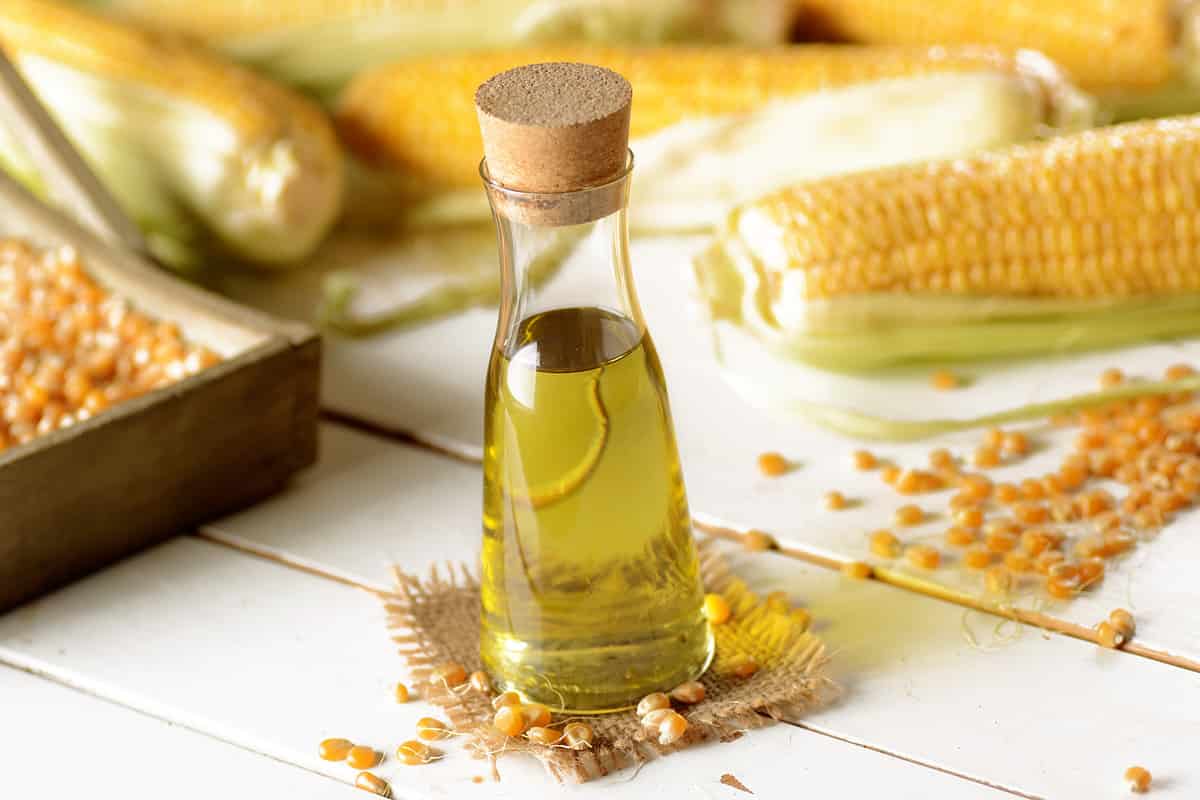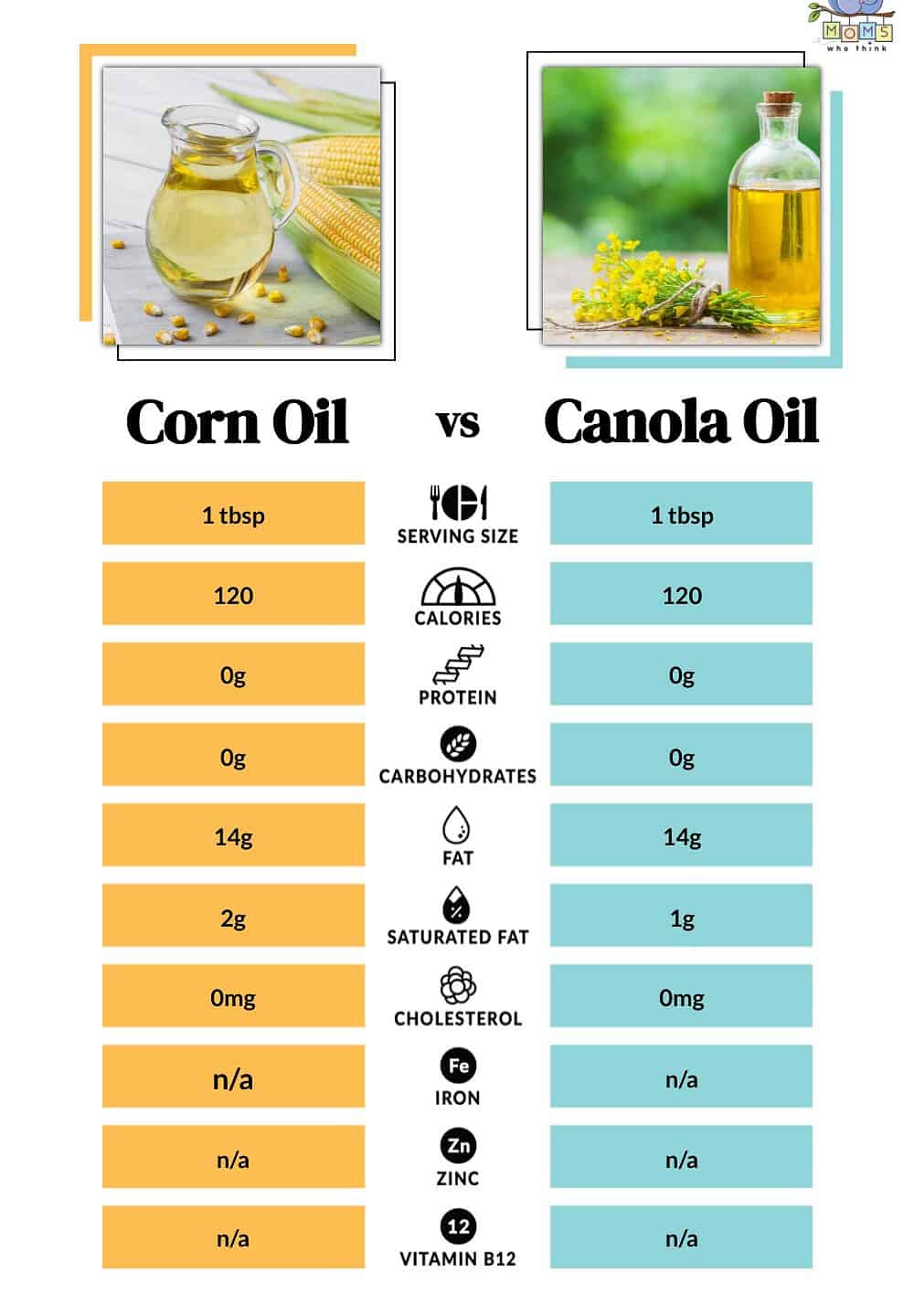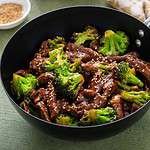When it comes to cooking or baking, there are a plethora of different oils to choose from. Your recipe may call for a specific type of oil, but how can you tell if that's the best option? Besides, aren't some oils healthier than others?
This is especially true for canola and corn oil. In general, canola oil is considered healthier than corn oil due to its lower fat content. But there are many things that set these two oil options apart.
Our goal is to give you confidence in the kitchen the next time you come across a new recipe. So, if you're looking for the healthiest oil option between canola and corn oil, we've got you covered. Let's dive in to see what the differences are between these two oils and which one is best for you.

The main difference between these two oils is the fat content.
©
What is Canola Oil?
Canola oil is a cooking oil that comes from the seeds of canola plants. These seeds are rich in fat and are crushed and further refined to create the oil. While many believe canola oil comes from rapeseed, the Canola Council of Canada states this is incorrect. Rapeseed is similar in appearance and was used to breed the canola plant, but it contains higher levels of erucic acid.
Canola plants are largely found in Canada but can also be found in parts of Europe, Australia, and the United States. The plants were created using plant breeding more than 50 years ago and are part of the same plant family as mustard seeds, broccoli, and kale.
Because these plants are one of the most widely grown in Canada, the name “canola oil” comes from a combination of the word Canada and the word “ola,” which refers to oil.
Health Benefits of Canola Oil
Just because this product is an oil doesn't mean it's an unhealthy choice. In fact, the CCC (Canola Council of Canada) states that it's a good source of healthy fats. Canola oil has lower amounts of saturated fats than other oils and contains no trans fat. Additionally, it offers omega-3 and omega-6 fat, as well as high levels of monounsaturated fat.
Ultimately, canola oil is high in healthy fats and low in not-so-great fats. When replacing other saturated fats with canola oil, the FDA states that this may reduce the risk of heart disease. Swapping saturated fats for this oil can also help to reduce LDL cholesterol.
What is Corn Oil?
Corn oil is derived from the germ, or the innermost part, of corn kernels. According to Science Direct, corn oil is a “by-product of corn meal and starch-making companies.” The oil is extracted from the kernel and refined to remove impurities and fatty acids. What's left is a smooth, golden oil that works well for cooking.
Health Benefits of Corn Oil
Like canola, corn oil is low in saturated fats, making it a healthier option than some other oils on the market today. Corn oil is also unique in that it contains healthy polyunsaturated fatty acids and is a rich source of vitamin E. The Corn Refiners Association states that these healthy fats and vitamins can help to control cholesterol levels and may even lower blood pressure.
Many manufacturers are now using corn oil as a substitute for saturated fats in snack foods and dishes prepared at restaurants.

Corn oil is derived from corn kernels and provides healthy fats and high levels of vitamin E.
©iStock.com/al62
Canola Oil vs. Corn Oil: What are the Differences?
As mentioned, canola oil tends to have a lower fat content than corn oil, but let's take a closer look at a few other differences between these two popular oils.
Sources and Production
We already know that canola and corn oil are derived from different plants. Canola oil is also a large export for Canada, while corn oil is largely produced in the United States, even though both can easily be found at your local grocery store.
These oils are also produced differently. Canola seeds are heated and then crushed to extract the oil. It's then refined to remove free fatty acids and gums. Corn oil, on the other hand, is a little harder to produce because corn kernels are not a naturally oily food. Kernels must be pressed to extract the oil and then go through several chemical processes to remove impurities.
Taste and Texture
Both are considered “neutral oils” in that using them won't alter the overall flavor of your dish because neither has much flavoring. However, when put side to side for a taste test, you may notice that corn oil has more of a buttery flavor.
Additionally, canola oil is known to have a slightly lighter texture than corn oil. This makes it an incredibly versatile cooking ingredient.
Culinary Use
Both canola and corn oil vary slightly when it comes to cooking. For instance, corn oil has a higher smoke point, which makes it a great fit for deep frying or sautéeing foods. On the other hand, canola oil's light texture and more neutral flavor make it a better option for baked goods. In general, canola is more versatile due to its lighter flavor and texture. Corn oil is a bit heavier and still has a slightly corny taste.
Canola Oil vs. Corn Oil: Nutritional Value
Both canola and corn oil are similar in calories, and neither are good sources of protein or carbs. Canola oil is slightly lower in saturated fat, though. Also, keep in mind that both of these oils are highly processed. This may help to remove impurities in the oils, but it can also include added chemicals.
The information below may change depending on which brand you use and how the specific oil is processed as well.

Canola Oil and corn oil are very similar in nutrition content, but canola is slightly lower in fats.
©
Can You Substitute Canola Oil for Corn Oil?
Absolutely! While they differ slightly in flavor, texture, and production, the two oils can generally be used interchangeably with a 1:1 ratio in your recipes without any issues. They are both versatile, refined oils that provide a neutral flavor and can be substituted in anything from salad dressings to frying and baking.
Other Substitutes for Canola and Corn Oil
There are an immense amount of cooking oils to choose from today. Whether you need a quick swap for your recipe or you're looking for a healthier option, here are a few other oils you can try:
- Vegetable oil. This is also a natural and refined oil, so it makes for an easy swap.
- Olive oil. From extra virgin to virgin, this oil has more heart-healthy fats and contains more nutrients. Keep in mind that olive oil has a much lower smoke point, however, so it's a better substitute for baking.
- Avocado oil. This oil has a higher smoke point, making it a suitable substitute for frying or sautéeing.
Which One is Better: Canola or Corn Oil?
Ultimately, the answer to this question is dependent on your nutritional needs and what you're whipping up in the kitchen.
Canola oil is often viewed as a healthier option for its lower saturated fat content, but there are other oils like olive, coconut, or avocado that you may want to research and try as well. Canola is also a better option for baking with its lighter texture and flavor. Corn oil tends to be better for frying because of its high smoke point.
Final Thoughts
Both canola and corn oil are neutral and refined oils that work well in baking, frying, or creating a salad dressing. If you're looking to lower your saturated fat content, you may want to choose canola oil, but corn oil can also offer a richer flavor and a heartier texture. Whichever one you choose, your recipe is sure to be delicious!
Print
Teriyaki Beef Stir Fry with Canola Oil
- Yield: 6 servings
Ingredients
- 1 cup water
- 2/3 cup reduced-sodium soy sauce
- 1/2 cup honey
- 6 garlic cloves, minced
- 2 Tablespoons minced fresh ginger root
- 1 beef flank steak (1 1/2 pounds), cut into thin strips
- 2 Tablespoons canola oil
- 4 cups broccoli florets
- 2 medium onions, chopped
- 2 medium green peppers, chopped
- 2 medium sweet red peppers, chopped
- 2 cups sliced fresh mushrooms
- 2 teaspoons cornstarch
- Hot cooked brown rice, optional
Instructions
1. In a medium bowl, combine the water, soy sauce, honey, garlic, and ginger.
2. Pour 1 cup of the mixture into a large resealable plastic bag; add beef.
3. Seal the bag and turn to coat. Refrigerate for at least 1 hour. Cover and refrigerate the remaining marinade.
4. Drain and discard the marinade from the bag after one hour.
5. In a large nonstick frying pan or wok, stir beef in batches in oil for 3 minutes or until no longer pink.
6. Remove and keep warm.
7. Add broccoli, onion, and peppers to the pan; stir fry for 4 minutes.
8. Add mushrooms; stir fry 2 minutes longer or until vegetables are tender.
9. In a small bowl, combine cornstarch and reserved marinade until smooth.
10. Return the beef to the pan. Stir the cornstarch mixture into the beef mixture.
11. Bring to a boil; cook and stir until thickened. Serve over brown rice if desired.
Nutrition
- Serving Size: 1 cup
- Calories: 320
- Sodium: 695 mg
- Fat: 11 g
- Carbohydrates: 29 g
- Fiber: 4 g
- Protein: 28 g
- Cholesterol: 59 mg
The image featured at the top of this post is ©Piece of Cake/Shutterstock.com


